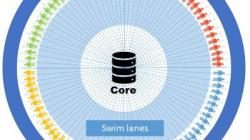Strategic investment decision-making involves the process of identifying, evaluating and selecting among projects that are likely to have significant impact on the organization competitive advantage. More specifically, the decision will influence what the organization does, where it does and how it does it.
More than 15 years ago, the Harvard Business Review had already declared corporate planning and budgeting as all but dead. “Corporate budgeting is a joke, and everyone knows it,” the business magazine wrote in 2001. The polarizing article generated an enormous reaction. However, little has changed since then.
For many organizations, the strategy gap is a major obstacle that systematically prevents businesses from truly maximizing their Strategic Planning efforts and sustainably creating value for their organization.
We live in a world of uncertainty. But in that uncertainty lies a great deal of opportunity for those organisations capable of successfully executing a winning plan.
Lately, I’ve noticed a significant uptick in the number of connections I have on LinkedIn who now list Strategic Finance as their primary job description.
Managing a successful FP&A (Finance) department requires balancing the right blend of People, Processes and Technology. Of course, this construct is nothing new, we’ve all heard this many times before.
Pagination
Subscribe to
FP&A Trends Digest

We will regularly update you on the latest trends and developments in FP&A. Take the opportunity to have articles written by finance thought leaders delivered directly to your inbox; watch compelling webinars; connect with like-minded professionals; and become a part of our global community.







